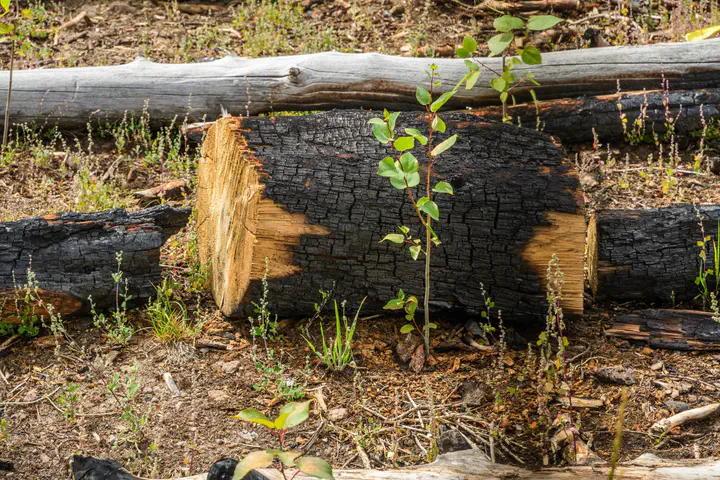Planting aspen in high-severity fire footprints
 Photo by Mike Saemisch
Photo by Mike SaemischAspen is a foundation forest species in high-elevation southwestern US ecosystems, but in many landscapes is declining due to climate change, herbivory, and conifer growth resulting from fire suppression. Aspen restoration has typically been accomplished by clearfelling existing stands to encourage suckering. This works well to regenerate existing clones as long as the stand roots are healthy enough to sucker, and as long as herbivory pressure is low. However, this approach cannot be used where aspen stands do not already exist. A major opportunity presented by the increase in large fires in the West is planting seedlings in fire footprints.
In collaboration with aspen ecologist and geneticist Karen Mock and graduate student Sarah Kapel we are working on a project to investigate the feasibility of planting aspen seedlings in a post-fire environment.